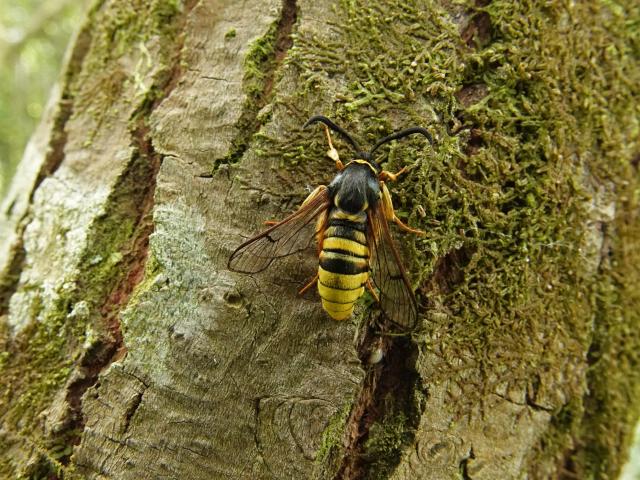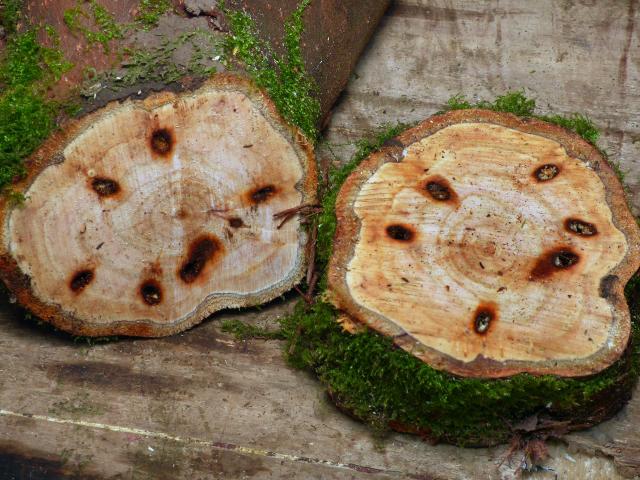Each month we’ll be finding out more about a species of butterfly or moth.
This month, let’s meet a marvellous moth – the Lunar Hornet Moth.
Common name: Lunar Hornet Moth
Scientific name: Sesia bembeciformis
Size: Its wingspan is 30-38mm
When does it fly: June to August
Where does it like to live: This fascinating moth favours fens, riverbanks, open woodland, and hedgerows. It can also be found in urban areas and is partial to a peatland.
Where you can see it: Although it can be difficult to spot, the Lunar Hornet Moth is common and widespread across England, Wales and southern Scotland. However, there are only a few scattered records in Ireland and Northern Ireland.
Amazing fact: The Lunar Hornet Moth is a part of a group of day-flying moths known as the ‘Clearwings’ who have – you guessed it – clear wings! They use their incredible mimicry skills – impersonating other insects – to deter predators.
"If there were a moth fancy dress contest, the Lunar Hornet Moth would win, hands down! For me, they are a perfect example of the incredible diversity of moths." – Savannah Jones, Digital Officer
You spot what looks like a familiar stripey yellow and black insect – a wasp, you think. Getting a bit closer, you notice it’s bigger than a wasp – a hornet, perhaps? But another look reveals you’ve been hoodwinked. This isn’t a hornet at all – it’s a moth in disguise!
The Lunar Hornet Moth is a species of Clearwing moth that, unlike the majority of the UK’s moths, which are nocturnal, flies in the day. It has a black and yellow striped body and wings that lack scales in places, making these patches transparent, which helps it mimic a hornet – a tactic to help deter potential predators who may not want to risk being stung or who may find the idea of eating hornets distasteful.

Although very elusive, the adult moths might be spotted resting on tree trunks, usually willows, after they’ve emerged in June. Lunar Hornet moths are morning people, so the best time to look is from around 8.30am onwards. The females sometimes do not fly until after they’ve mated, so keep your eyes peeled for any ladies who might be hanging around waiting for a date…
Once the females have mated, they will seek out trees that their offspring love to feast on – usually willows, like Goat Willow, or occasionally poplars – particularly those in soggy situations like fens and bogs. They lay their eggs, which resemble very small animal droppings, on the bark so that, once hatched, the caterpillars can burrow into the tree and feed within the trunk.

The caterpillars which are a creamy-white colour with a chestnut-brown head and resemble beetle larvae, might take two to three years to become fully grown, feeding lower on the tree in the first year and moving slightly higher up in the second year.
Once ready to pupate, the Lunar Hornet Moth caterpillars will make their way to the entrance of their burrow and weave a cocoon out of silk and wood from the tree. Once pupated, the adults emerge, ready to deceive predators and moth recorders alike!
Butterfly Conservation are working to protect the UK’s peatlands, an important habitat for the Lunar Hornet Moth, find out more at Why bogs are brilliant for butterflies, moths and the planet | Butterfly Conservation (butterfly-conservation.org)


